
The group gathered as instructed at the end of a long walkway in the Pennsylvania woods near Uniontown. We waited for a few moments and he joined us – complete with ochre-coloured polo shirt and pants and a hardwood walking stick – to begin our tour. He seemed a rather young man to be guiding us through something as prestigious as this Frank Lloyd Wright-designed house. But the moment he began to speak about this place called “Fallingwater,” we sensed we were in the hands of a master tour guide.
“Just the way my arm rests across my walking stick,” he said, placing his forearm at right angles to the stick, “is the cantilever design that Wright used to build this home for Edgar and Liliane Kaufmann.”
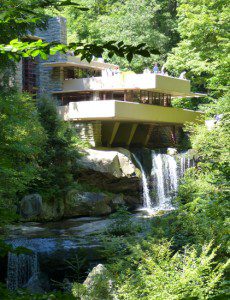
Last weekend, because a number of my family members and I had chosen to locate a reunion in western Pennsylvania, we decided to include a visit to Fallingwater, the house that Frank Lloyd Wright designed and built for the famous department store family in 1936. The summer home, literally built into the top of a waterfall in the Laurel Highlands of the Allegheny Mountains, attracts about 135,000 tourists a year, more than 5 million since the building was donated to the Western Pennsylvania Conservancy and opened to the public a few years ago. But I was fascinated by some of the people stories associated with this home, known as “Wright’s most beautiful job.” And our young tour guide, recently graduating student Nathan Schultz, delivered.
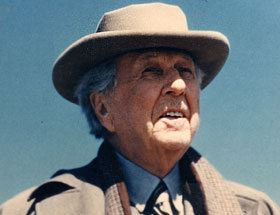
From the moment our tour group – about 14 people ranging from teenagers to retirees – entered the building, the men and women visitors showed avid curiosity for every nook, cranny and folktale associated with its creation and construction. And guide Schultz did not disappoint. When somebody asked how Fallingwater ranks among Wright’s designs, our guide had it all at his fingertips.
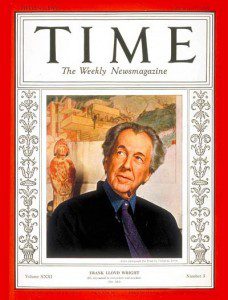 “According to the American Institute of Architects it’s the 29th favourite,” he said. “Wright was known for such commercial designs as the Johnson Wax building in Wisconsin … but when Time magazine featured this home on its front cover in 1938, Wright became the equivalent of a rock star. … Fallingwater is listed among the Smithsonian’s Life List of 28 places to visit before you die.”
“According to the American Institute of Architects it’s the 29th favourite,” he said. “Wright was known for such commercial designs as the Johnson Wax building in Wisconsin … but when Time magazine featured this home on its front cover in 1938, Wright became the equivalent of a rock star. … Fallingwater is listed among the Smithsonian’s Life List of 28 places to visit before you die.”
OK, the big stuff seemed fairly easy to recite to his audience. But our group was quite a varied one. Just among my family members alone were a couple of teachers, a playwright, a TV writer, a magazine editor and, yes, even a building contractor. So we were curious about very different things.
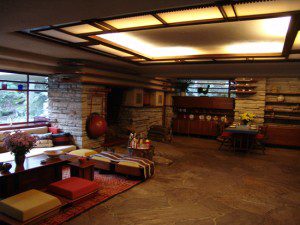
One asked about the choice of colours and our guide explained the home featured concrete painted in Wright’s favourite tone, light ochre, and his signature Cherokee red in the steel window frames. And why, my contractor cousin asked, are all the ceilings built so low? Because Wright created Fallingwater like most of his designs, for someone of his own height, Schultz said.
As many of you know, I’ve tried my hand at a form of tour guiding. Each year, my wife and I lead travellers overseas to important battlefields of the First and Second World Wars in Europe. I’ve always tried to use the Nathan Schultz style of storytelling; that is, I try to paint the big picture, you know, the tales about how this politician blundered or that military general blustered.
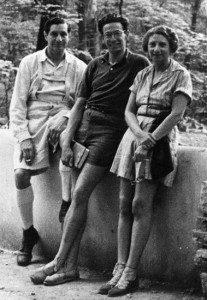
But I’ve found that it’s the seemingly smaller human accounts of those witnesses closer to the ground that capture people’s imagination most. I call it putting a face on history. I think that’s what made our Fallingwater guide so memorable too. He made complicated architecture and highfalutin owners more real with his anecdotes.
Indeed, Nathan Schultz, who said he’d only been on the job about 15 months, had one last surprise for us. A number of us had asked about how quickly Frank Lloyd Wright’s design was actually created. As we stood on the patio of Fallingwater’s upper level guest house, Schultz explained that the Kaufmanns had originally summered in cabins overlooking the waterfall.
 When Wright suggested to Edgar Kaufmann Jr. that his parents deserved a more worthy house, Wright got the commission for the new home in 1935. Half a year later, Kaufmann Sr. called Wright in his Milwaukee neighbourhood; he said he’d pay him a surprise visit to see a first draft of the new summer home. Wright apparently hadn’t created any part of the Fallingwater design yet.
When Wright suggested to Edgar Kaufmann Jr. that his parents deserved a more worthy house, Wright got the commission for the new home in 1935. Half a year later, Kaufmann Sr. called Wright in his Milwaukee neighbourhood; he said he’d pay him a surprise visit to see a first draft of the new summer home. Wright apparently hadn’t created any part of the Fallingwater design yet.
“After breakfast that morning,” guide Schultz told us, “Wright sat down with a sketch pad and calmly drew up the plans for the complicated design incorporating the falls and the multi-level house in about three hours. That’s pretty much the design you see here.”
It appeared that our tour guide had left one of his best stories to last. I’ll have to remember that the next time I’m conducting a guided tour of an architectural masterpiece.